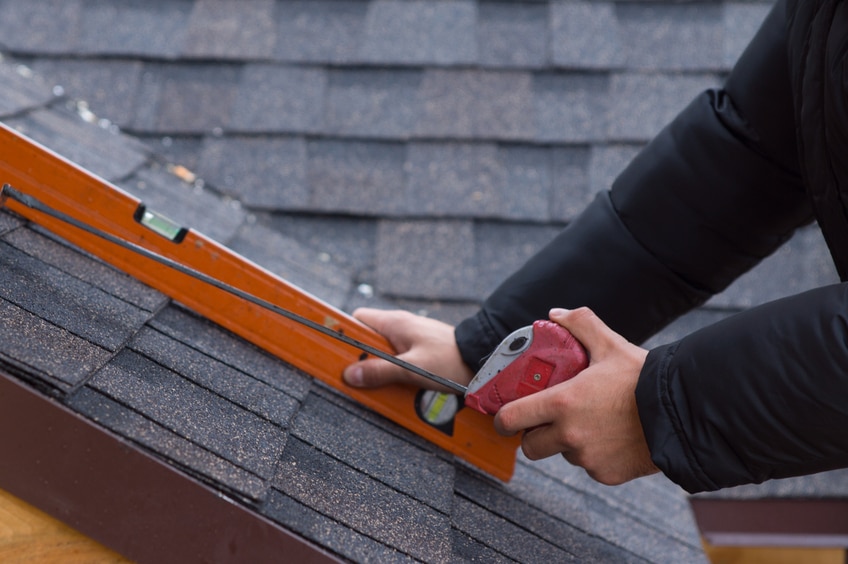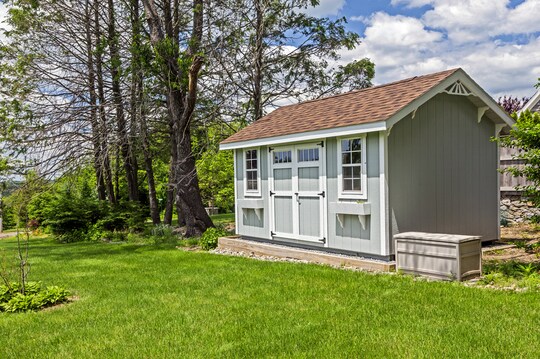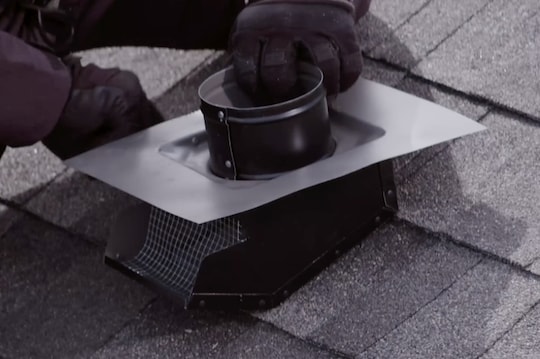
Los propietarios de viviendas pueden encontrar muchos términos específicos sobre techos cuando comienzan un nuevo proyecto de techado, y es probable que "cuadrado de techo" sea el primero con el que te topes. La medición en cuadrados es exclusiva de la industria del techado; para los propietarios de viviendas, entender de qué manera funcionan estas medidas puede ser una parte desconocida, pero vital, en la planificación de un reemplazo o una reparación de techo.
¿Qué es un metro cuadrado de techo?
In roofing, one square equals 10 X 10 ft., or 100 sq. ft. This unit of measurement determines how many shingles you'll need for every 100 sq. ft. of rooftop. As you prepare for your roofing project, you'll use squares to determine the amount of roofing materials you need, from asphalt shingles down to the underlayment.
How to Calculate a Roofing Square
Before beginning, make sure you can safely access your roof—if you can't, contact a roofing professional for help.
Grab your measuring tape, level, pen and paper, roof safety equipment, and your ladder. With these in hand, you can measure your roof in five simple steps.
- Determine the number of planes. Your roof is made up of planes. If you have a flat roof, it has one plane. If you have a simple gable roof, it has two planes. The more architectural details your roof has, the more planes you will have to measure.
- Measure each plane. Find the length and width of each plane. Then, multiply those two numbers together to find the square footage of that plane. For example, a 35 ft. X 36 ft. plane = 1260 sq. ft.
- Find the total of all the planes. Add the square footage for each roof plane into one total. 1,260 sq. ft. + 1,260 sq. ft. = 2,520 sq. ft.
- Divide to find the squares. To find how many squares are on your roof, divide the total square footage of all your planes by 100. In our example, the total was 25.2 squares — 2,520 sq. ft. divided by 100.
- Remember the roof slope. Roof slope indicates how steep your roof is and may increase the number of squares of materials you need. Roof slope is calculated by determining how many inches a roof rises vertically for every 12 inches it extends horizontally. For example, if that vertical rise is 4 inches, the slope is 4:12.
You can use an online shingle calculator or roof slope calculator to help run the calculations. Once you know the total number of squares you want to cover, consider adding up to 10% in overage to account for error and installation.
Pro tip: don't rely on your home's square footage to determine roof size. Your roof's overhangs, architectural details, and slope all increase its size. For example, a 2,200 sq. ft. home (22 squares) might have a 3,500 sq. ft. roof (35 squares).
How to Calculate Number of Roofing Shingles
Fortunately, you don't have to make a haphazard shingle estimate when planning for your roofing project: your roof size and chosen shingle type will guide the purchase process.
Shingles are sold in prepackaged bundles, not individually. Roofing manufacturers take the guesswork out of how many bundles you need per square-it's listed in the specifications of each shingle they make. The specs for any given shingle will tell you how many bundles make up a square, how many shingles are in a square, and even the approximate number of nails you'll need per square.
Often, three bundles of prepackaged asphalt shingles make one square, as is the case with the Timberline® HDZ™ Shingles. That said, the number of bundles you need can vary depending on shingle design. For example, five bundles of architectural asphalt shingles with artisan-crafted shapes, such as the Grand Sequoia® Shingle, cover one square. Once you know the number of squares of material your roof needs, check the shingle manufacturer specifications so you get your hands on exactly what you need.
If you're still deciding on the perfect shingle for your roof, play around with the GAF VirtualRemodeler. The free online tool helps you envision how different shingle colors and styles would work with your home's style. Be sure to keep local building codes in mind as you weigh your shingle options..
Ready to get rolling? Before you begin, take the appropriate safety precautions for getting onto your roof. If you can't safely access your roof, reach out to a local contractor certified by GAF.*
*Los contratistas inscritos en los programas de certificación de GAF no son empleados ni agentes de GAF, y GAF no controla ni supervisa de otro modo estas empresas independientes. Los contratistas pueden recibir beneficios, como puntos y descuentos de recompensa por lealtad en herramientas de comercialización de GAF por participar en el programa y ofrecer a GAF garantías mejoradas, que requieren el uso de una cantidad mínima de productos de GAF.





